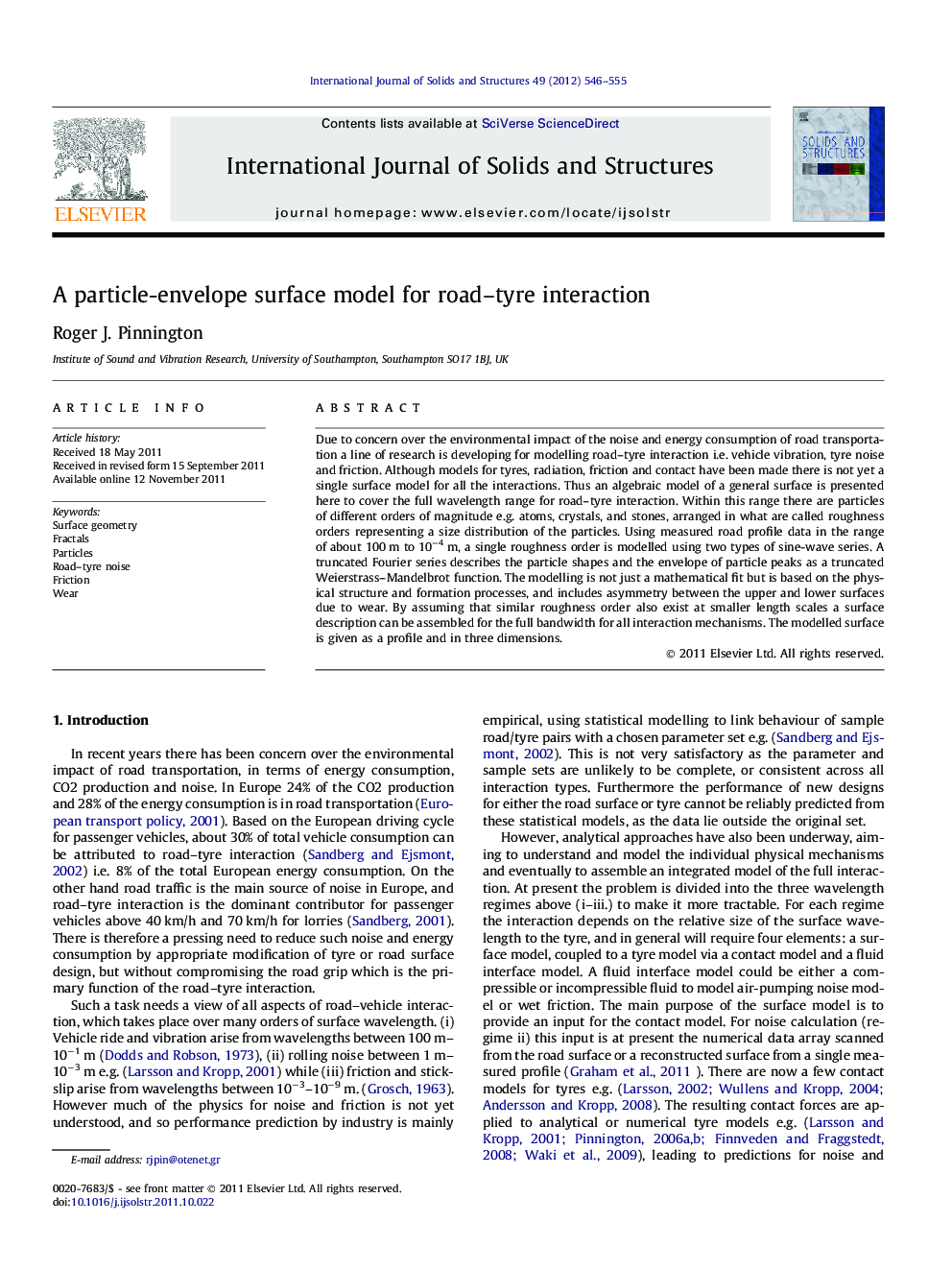| کد مقاله | کد نشریه | سال انتشار | مقاله انگلیسی | نسخه تمام متن |
|---|---|---|---|---|
| 278408 | 1430284 | 2012 | 10 صفحه PDF | دانلود رایگان |

Due to concern over the environmental impact of the noise and energy consumption of road transportation a line of research is developing for modelling road–tyre interaction i.e. vehicle vibration, tyre noise and friction. Although models for tyres, radiation, friction and contact have been made there is not yet a single surface model for all the interactions. Thus an algebraic model of a general surface is presented here to cover the full wavelength range for road–tyre interaction. Within this range there are particles of different orders of magnitude e.g. atoms, crystals, and stones, arranged in what are called roughness orders representing a size distribution of the particles. Using measured road profile data in the range of about 100 m to 10−4 m, a single roughness order is modelled using two types of sine-wave series. A truncated Fourier series describes the particle shapes and the envelope of particle peaks as a truncated Weierstrass–Mandelbrot function. The modelling is not just a mathematical fit but is based on the physical structure and formation processes, and includes asymmetry between the upper and lower surfaces due to wear. By assuming that similar roughness order also exist at smaller length scales a surface description can be assembled for the full bandwidth for all interaction mechanisms. The modelled surface is given as a profile and in three dimensions.
► The surface model consists of a nested set of particle-envelope structures.
► The envelope function is a fractal function that controls the amplitude of the surface.
► The particle shape controls the gradient and friction, and is modelled with a truncated Fourier series.
► Symmetric and asymmetric surface changes in wear or construction can be modelled.
Journal: International Journal of Solids and Structures - Volume 49, Issues 3–4, February 2012, Pages 546–555